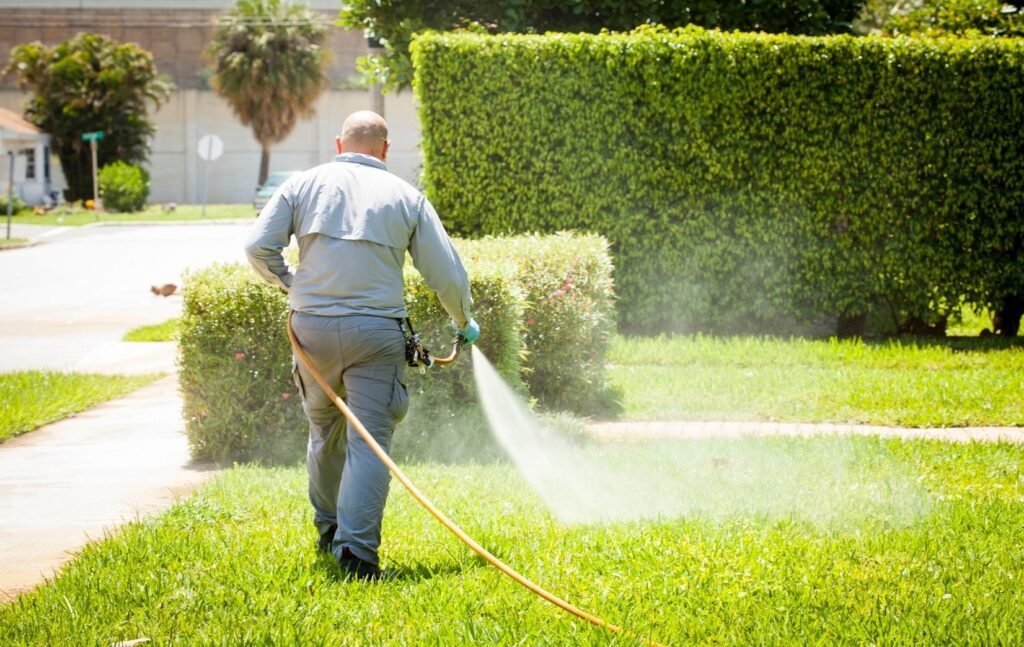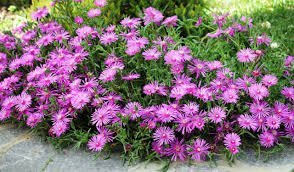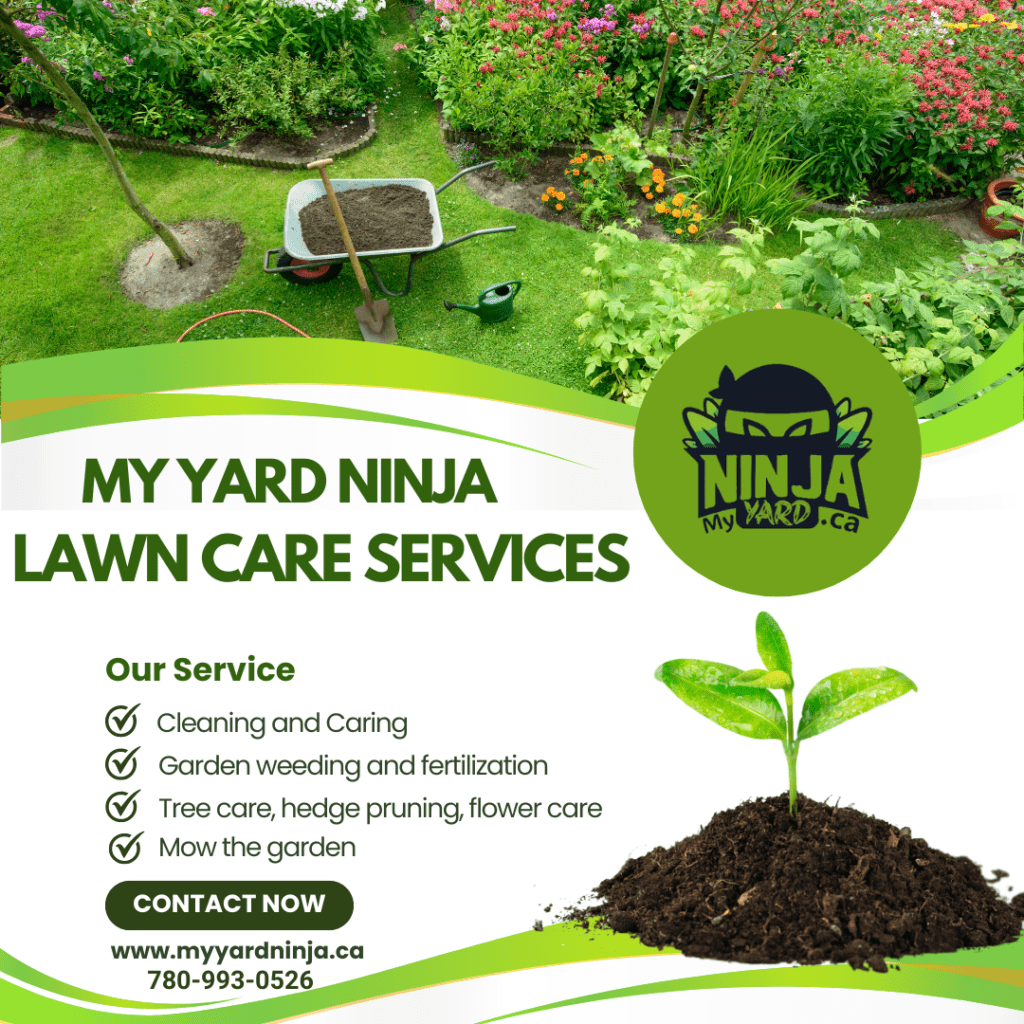Creating a low-maintenance garden in Edmonton, a city known for its variable climate with cold winters and moderate summers, requires strategic planning and smart choices. Here are some expert Lawn Care Edmonton tips to help you maintain a beautiful and sustainable garden with minimal effort.
Choose The Right Grass
The foundation of a low-maintenance Lawn Care Edmonton begins with selecting the appropriate grass type. In Edmonton, cool-season grasses are ideal due to their resilience in colder climates. Consider Kentucky bluegrass, perennial ryegrass, or fine fescue. These grasses are well-suited for Edmonton’s climate and require less water and fertilization compared to other varieties.
Tip:
Mix different grass types to create a robust lawn that can withstand pests, diseases, and varying weather conditions.
Soil Preparation And Testing
Healthy soil is crucial for a thriving lawn. Start by testing your soil to determine its pH and nutrient levels. Edmonton’s soil can be clay-heavy, which affects drainage and root growth.
Steps:
Test the Soil: Use a soil testing kit to measure pH and nutrient content.
Amend the Soil: Based on test results, add lime to raise pH or sulfur to lower it. Incorporate organic matter like compost to improve soil structure and fertility.
Proper Mowing Practices
Mowing correctly is vital for a healthy, low-maintenance Lawn Care Edmonton. Here’s how to do it right:
Mow High: Set your mower blades to cut at a height of 2.5 to 3 inches. Taller grass shades the soil, reducing water evaporation and weed growth.
Mow Regularly: Regular mowing encourages a denser lawn, which naturally suppresses weeds. Aim to remove no more than one-third of the grass blade at each mowing.
Sharpen Blades: Keep mower blades sharp to ensure clean cuts, reducing stress on the grass and preventing disease.
Efficient Watering Techniques
Watering wisely can significantly reduce maintenance efforts. In Edmonton, water conservation is essential due to variable precipitation patterns.
1: Water Deeply and Infrequently: Encourage deep root growth by watering deeply once or twice a week, rather than shallow, frequent watering.
2 Time it Right: Water early in the morning to minimize evaporation and fungal growth. Avoid watering during the hottest part of the day or late in the evening.
3: Use Drip Irrigation or Soaker Hoses: These systems deliver water directly to the roots, reducing waste and ensuring efficient moisture distribution.
Smart Fertilization

Fertilizing your lawn with Lawn Care In Edmonton provides essential nutrients, but over-fertilization can lead to excessive growth and more mowing. In Edmonton, a balanced approach works best.
1: Use Slow-Release Fertilizers: These provide a steady supply of nutrients over time, reducing the need for frequent applications.
2: Timing: Fertilize in early spring and late summer. Avoid fertilizing during peak summer heat to prevent stress on the grass.
3: Organic Options: Consider using organic fertilizers, which improve soil health and are environmentally friendly.
Weed And Pest Control
Weeds and pests can be a challenge, but a healthy lawn can naturally resist many common problems. Here’s how to manage them with minimal effort:
1: Pre-Emergent Herbicides: Apply pre-emergent herbicides in early spring to prevent weed seeds from germinating.
2: Spot Treatment: Use post-emergent herbicides or natural solutions like vinegar for localized weed control.
3: Pest Monitoring: Regularly inspect your lawn for signs of pests. If needed, use targeted treatments like neem oil or insecticidal soaps, which are less harmful to beneficial insects.
Aeration And Dethatching
Compacted soil and thatch buildup can hinder grass growth. Aeration and dethatching are essential practices for maintaining a healthy lawn.
1: Aerate Annually: Aerate your lawn in the spring or fall to relieve soil compaction and improve water and nutrient penetration. This involves removing small cores of soil to allow air, water, and nutrients to reach the roots.
2: Dethatch If Necessary: Thatch is a layer of organic material that can build up and choke your lawn. Use a dethatching rake or machine if the thatch layer exceeds half an inch.
Embrace Native Plants And Ground Covers

Incorporating native plants and ground covers can reduce lawn size and maintenance needs. Native plants are adapted to Edmonton’s climate and require less water and Lawn Care Edmonton.
Benefits:
1: Low Maintenance: Native plants thrive with minimal intervention.
2: Biodiversity: They support local wildlife, including pollinators.
3: Erosion Control: Ground covers like clover or creeping thyme prevent soil erosion and outcompete weeds.
Sustainable Lawn Alternatives
Consider alternative lawn options that are both attractive and low-maintenance.
1: Artificial Turf: Modern artificial grass looks realistic and eliminates the need for mowing, watering, and fertilizing.
2: Hardscaping: Incorporate elements like patios, walkways, and gravel paths to reduce lawn area and create functional outdoor spaces.
3: Mulching: Use mulch in garden beds to retain moisture, suppress weeds, and reduce the need for frequent watering.
Seasonal Maintenance Tips
Adapting your Lawn Care Edmonton routine to the seasons ensures your garden remains low-maintenance year-round.
Spring:
- Aerate and overseed if necessary.
- Apply a slow-release fertilizer.
- Start regular mowing.
Summer:
- Maintain proper mowing height.
- Water deeply and infrequently.
- Monitor for pests and weeds.
Fall:
- Aerate and dethatch.
- Apply a final round of fertilizer.
- Rake leaves to prevent smothering grass.
Winter:
- Minimize foot traffic on the lawn.
- Clear heavy snow to prevent grass damage.
Conclusion

A low-maintenance garden in Edmonton is achievable with thoughtful planning and consistent Lawn Care Edmonton with My Yard Ninja. By choosing the right grass, optimizing soil health, mowing correctly, and embracing sustainable practices, you can enjoy a beautiful lawn with minimal effort. Incorporate native plants, ground covers, and sustainable alternatives to further reduce maintenance and create a thriving, eco-friendly garden. Remember, the key to a low-maintenance lawn is working with nature, not against it.
